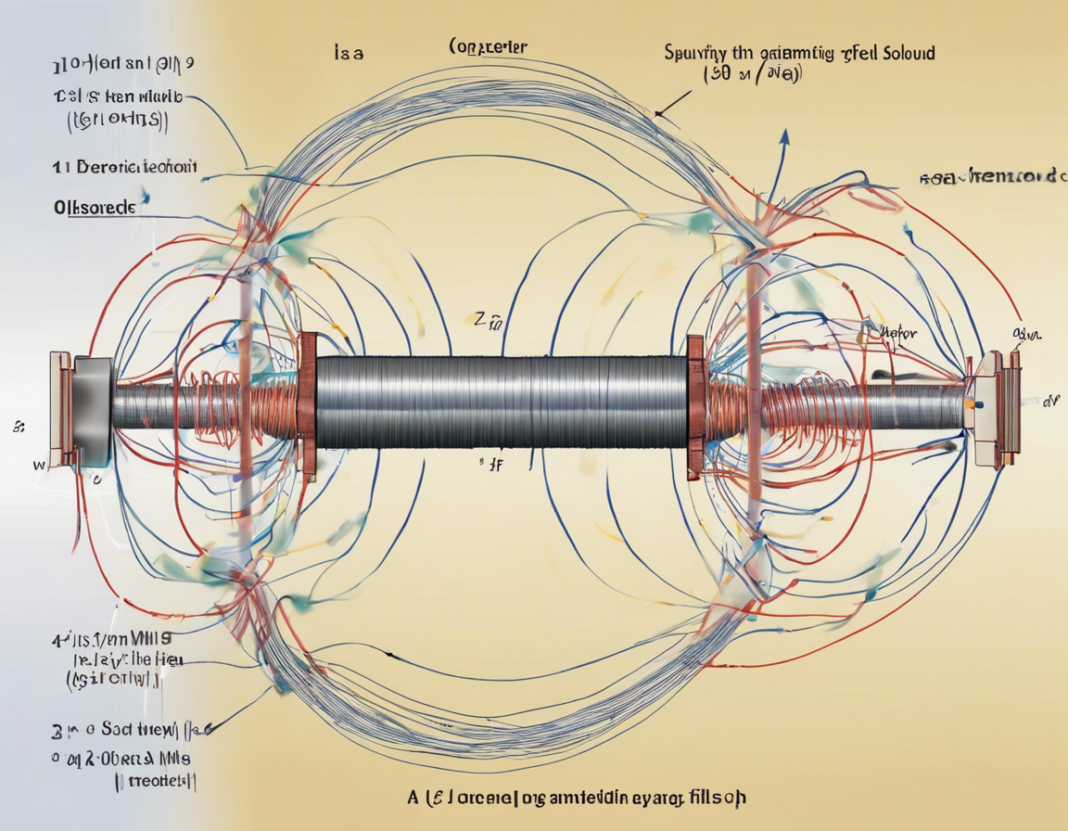Introduction
In the realm of electromagnetism, solenoids play a crucial role in generating magnetic fields. A solenoid resembles a tightly wound coil of wire, capable of producing a strong magnetic field within its core when an electric current passes through it. One of the simplest yet most fascinating configurations is the straight solenoid, where the wire is wound uniformly along the length of a cylindrical core. This article aims to delve into the intricacies of the magnetic field within a straight solenoid, exploring its characteristics, calculations, and applications.
Understanding the Straight Solenoid Structure
A straight solenoid is characterized by its tightly wound coil of wire along a cylindrical axis, typically with a uniform spacing between the turns. The core material, which can be air or a magnetic material, determines how the magnetic field forms and propagates through the solenoid. When a current I flows through the coil, each turn of the wire generates a magnetic field. Due to the collective contribution of all these turns, the magnetic field inside the solenoid becomes significantly stronger compared to the field produced by a single turn of wire.
Calculating the Magnetic Field Strength Inside a Straight Solenoid
To understand the magnetic field inside a straight solenoid, we can use Ampére’s Law, which relates the magnetic field to the current enclosed by a closed loop. For a solenoid, this law simplifies the calculation to:
[B = \mu \cdot n \cdot I]
where:
– B is the magnetic field strength inside the solenoid,
– μ is the permeability of the core material,
– n is the number of turns per unit length (spatial density) of the solenoid, and
– I is the current flowing through the solenoid.
This equation highlights the direct proportionality between the magnetic field strength and the current passing through the solenoid, as well as the number of turns per unit length. Increasing either the current or the density of turns will result in a stronger magnetic field inside the solenoid.
Properties of the Magnetic Field in a Straight Solenoid
-
Uniformity: The magnetic field inside a straight solenoid is notably uniform along its axis, barring the end effects near the edges. This uniformity makes solenoids ideal for applications requiring consistent magnetic fields over a specific region.
-
Direction: The direction of the magnetic field inside a solenoid follows the right-hand grip rule. By wrapping the right hand around the solenoid with fingers in the direction of the current flow, the thumb points in the direction of the magnetic field lines inside the solenoid.
-
Strength Control: The strength of the magnetic field within a solenoid can be controlled by adjusting the current passing through the coil or by altering the number of turns per unit length. This flexibility in magnetic field control makes solenoids versatile in various applications.
Applications of Straight Solenoids
-
Electromagnetic Actuators: Straight solenoids find extensive use in electromagnetic actuators, such as in valves, switches, and relays where the magnetic field generated by the solenoid controls the movement of a mechanical component.
-
Magnetic Resonance Imaging (MRI): In the medical field, solenoids are utilized in MRI machines to produce strong and uniform magnetic fields for imaging purposes, showcasing the precision and reliability of solenoids in critical applications.
-
Induction Heating: Solenoids are also employed in induction heating systems, where the magnetic field induces currents in conductive materials to generate heat. This is commonly seen in induction cooktops and industrial heating processes.
-
Magnetic Field Sensors: By utilizing the magnetic field produced within a solenoid, these devices can be employed as magnetic field sensors for various applications, including proximity sensing and navigation systems.
FAQs:
- Can the magnetic field inside a straight solenoid be reversed by changing the direction of the current flow?
-
Yes, reversing the direction of the current flow in a solenoid effectively reverses the direction of the magnetic field inside the coil.
-
How does the core material influence the magnetic field in a straight solenoid?
-
The core material affects the permeability of the solenoid, influencing how the magnetic field is formed and propagated within the coil.
-
What happens to the magnetic field at the ends of a straight solenoid?
-
Near the ends of a solenoid, the magnetic field becomes non-uniform due to edge effects, resulting in field distortions.
-
Is there a limit to how strong the magnetic field can be inside a straight solenoid?
-
The strength of the magnetic field is primarily limited by factors such as the current carrying capacity of the wire and the material properties of the core.
-
How does the length of a straight solenoid impact its magnetic field strength?
- In general, a longer solenoid with more turns can produce a stronger magnetic field, provided that the current flowing through it is sufficient.
In conclusion, the magnetic field within a straight solenoid is a fascinating phenomenon that finds applications in various technological and scientific fields. Understanding the principles governing the magnetic field inside a solenoid not only sheds light on its behavior but also paves the way for innovative uses in diverse industries. Whether in the realm of electromechanical systems or medical diagnostics, the versatility of straight solenoids continues to drive advancements in modern technology.












